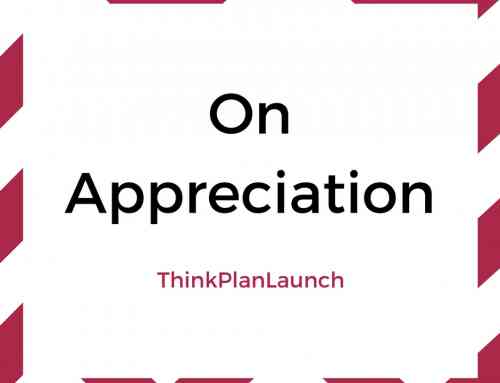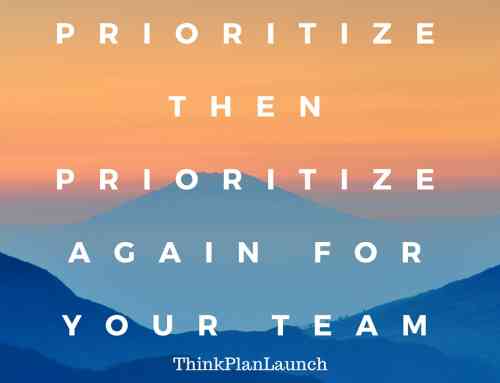Leadership skills from a High-C, as assessed from a DISC assessment, comes from a mix of having a great analytical mind, precision and accuracy in planning and execution, and diplomacy. As we have described before, the “C” in DISC stands for “compliance” or “conscientious.” The word “compliance” isn’t usually associated with leadership, but the term applied to a set of behaviors can turn a manager into a powerful leader who must operate under strict guidelines or high-risk environments where rules and methodology trumps the High-D, High-I, and High-S.
A laboratory setting is a good example. In many instances, there are a range of hazards which can cause harm to the team and the organization. A manager who is a High-C possesses the natural behavior that allows them to take great care in following operating procedures. In the case of having fresh underlings in under their wings, a High-C projects confidence and guidance to otherwise worried team members.
When dealing with people, the High-C is known to be introverted and task-orientated. In an organization, the High-C is a powerful person who is unwavering to impulses and trends. The High-C slows the pace down to keep order and a steady approach.
Despite the focus on accuracy and compliance, there are some natural weaknesses which can make the High-C stumble. Fear is a driving force that controls the behavior of a High-C. While fear can be good in risky environments, when it persists when there is little reason for trigger it, it becomes debilitating. In addition to fear, the High-C will display excessive rigidity during times of stress. This strict attitude can block progress when the rules need to be bent to more forward.
When making decisions, the High-C can take longer than needed. The desire to achieve perfection can cause paralysis in an organization. Finally, when dealing with others, the High-C can be callous, distant, and hard to approach which creates conflict for the team as well as themselves when they have no outlet to express emotions.
In this post we will tackle these weaknesses and focus on the strengths that make the High-C a great leader.
Table of Contents
Fear for the High-C
The word fear might sound like a weakness that makes the High-C timid or unable to take action. However, the opposite is usually true. Fear of failure, danger, being left behind, and more can drive a High-C into action. In the quest for perfectionism, the High-C will do what it takes to achieve the vision that is created. As mentioned previously, fear can be good for making a person compliant in a risky environment. As a leader, the High-C must ensure the safety of all team members. This puts a lot of responsibility on the High-C which makes them follow the book to make sure everyone gets home.
In other environments, without physical hazards, the High-C can be driven to protect the interests of the organization from external threats such as competitors, legal entanglements, and more.
On a sliding scale, when fear becomes too high, it can cripple progress and become a weakness. While fear itself is hard to naturally ease, there are ways to approach fear to make it useful and not harmful. A system should be developed to address potential causes of concern. A good analogy comes from the aviation industry. A pilot is always required to go through a pre-flight checklist to ensure that everything is in order. Without this checklist, it is difficult for a pilot to be confident in the safety and performance of the airplane.
Developing or adapting a system to address concerns should be high priority. Rigorous testing and perfecting will make if valuable for the High-C to maintain the environment needed for the organization to thrive. When adapting a new system, it is always a good idea to communicate its purpose and validity to the team to ensure that they are also motivated to comply.
The analytical power of the High-C
High-Cs should be particularly proud to engage in highly analytical behavior. Taking the time to thoroughly assess a situation and understand all the potential options to proceed is a powerful behavior that lets the High-C explore all options available.
To enhance the analytical power of the High-C leader, they must ensure that they are equipped with the right tools to make sure that their time is being used efficiently. An example can be taken from the marketing field. In the quest to understand the customer more, a market manager must dive into the data to see what trends are taken place so that they can be used for repeated success. In an online campaign, powerful tools such as website analytics will calculate and display all of the data in a meaningful way, saving the manager a considerable amount of time which allows them to do higher level analysis.
When the analytical mind is over-extended however, it can become a cause of concern. In the quest for knowledge and information, a High-C will become overloaded with potential options, pathways, and concerns. This hinders their ability to make decisions. In the case of crises or unforeseen changes, a High-C can falter when having to decide where to lead their team. As a leader, indecisiveness is weakness. Fortunately, there are a number of decision-making techniques in existence.
In order to achieve a balance in through analysis and making progress, the High-C leader must also understand what the priorities are and what resources are available to achieve their goals.
For the High-C compliance is a religion
Yes, compliance to rules and procedures are valuable to the High-C in order to achieve goals. In the context of a team setting, compliance is not always universal. The discipline bestowed by the High-C to the team is of great value. Once such application is within the armed forces. There are a number of rules that must be followed as part of the regulation of military units. In times of battle, following rules exactly to the letter creates predictability and confidence in the face of chaos.
While this is a distinct advantage when compared to other liberal operations, there are some weaknesses which make it difficult for the High-C to be an effective leader.
Team members always have a mind of their own. In many of the other DISC types, there is less of a will to comply to rules and regulations. The High-D is fairly notorious for bending the rules to achieve results. Because of this, the High-C leader can appear too rigid at times which can cause stress and frustration for other team members. In fact, one of the big weaknesses of a High-C is to recruit people just like themselves instead of making a more balanced team with the other DISC types. During times of concern, communication is the best pathway to achieving a balanced approach.
Making communication a two-way process and adapting it to other behavior types is necessary to be successful at influencing others. Avoiding communication mistakes is a helpful way of gaining compliance from the entire team. The appearance of being overly strict and rigid needs to be replaced with reasonable and logical in order for the High-C to be more of a leader and less of a dictator.
The High-C emotional chirade
As an introvert, the High-C does little to display emotions openly. This can be advantageous to the leader as much as it is for the High-S. Having a poker face in the face of the competition is great. It disarms them and makes the behavior of the High-C very unpredictable. To the team, a lack of emotion can help show confidence when undergoing a difficult project or task. To themselves, it can hide distress.
Leaders must always face challenges. It can be a threat to their organization, a personal attack, or other difficulty. The High-C naturally will keep emotions to themselves. While it isn’t a great idea to be an open book or wear your heart on your sleeves, there are occasions in which case camaraderie in a team can ease the effects of stress.
High-Cs must know when to seek the help of others. Leaders know that they can’t rely on themselves for everything. While it might feel like a personal defeat to seek the help of others, it is often the most successful leaders who will find help when they need it. A display of emotions doesn’t necessarily have to be dramatic, but some outward signs can be useful to perpetuate action within a team.
The bottom line for the High-C
1. Strike while the iron’s hot
A High-C is prone to hesitate to act unless there is some past success which indicates a favorable outcome. High-Cs must balance risk and opportunity
2. Don’t over-analyze
Analyzing something to excess blocks action. Effective procedures must be used to aid in decision making.
3. Be careful of criticizing others
Total compliance to rules and procedures isn’t in the nature of the other DISC types. Excessive criticism can breakdown communication.
4. Spare the details
Paying attention to details can make or break a product or service. Learning where these details count is important. Total perfection is often at the cost of success. Prioritize what is important
5. Don’t internalize feelings
Find an appropriate outlet for your emotions. Keeping them to yourself is a cause of emotional burnout
6. Take criticism as feedback
Criticism is a useful tool for progress and change. Taking it personally is not helpful for the team.
7. Don’t compromise values for maintaining diplomacy
High-Cs have a penchant for making compromises too early to avoid conflict. This loses ground when trying to accomplish something.
8. Choose people unlike yourself
Diversity creates opportunity for innovation. Eliminate bias from your hiring decisions and make a well-rounded team.
9. Sell don’t tell
Ideas need to be communicated in an enticing way. Using data and figures to back up an idea doesn’t work well with everyone. Become a good salesman.
10. Relax
Be easy on yourself and others. Life needs balance to achieve meaningful results without burning out.




Leave A Comment